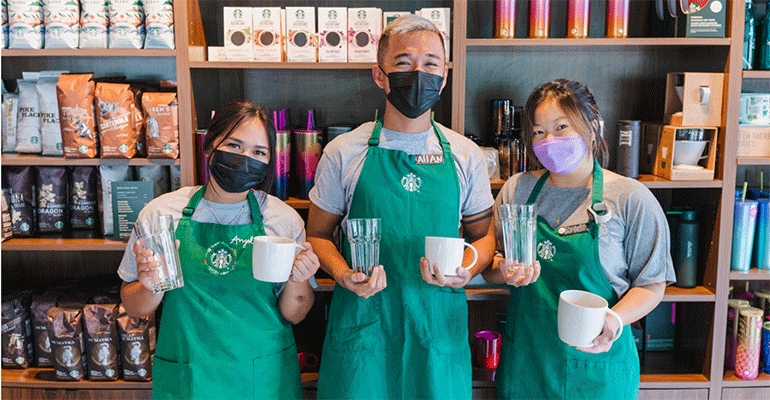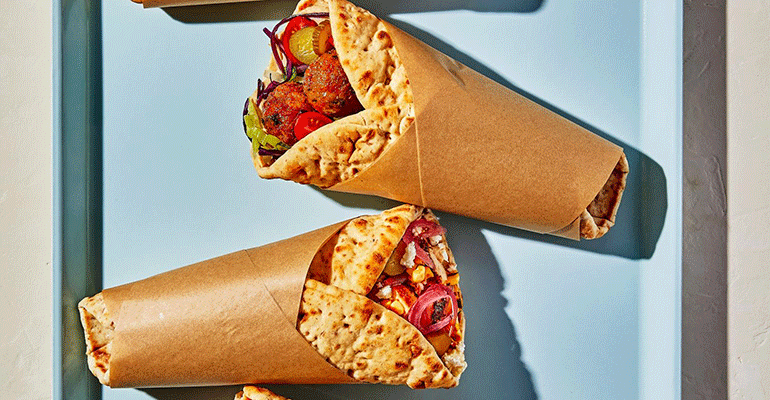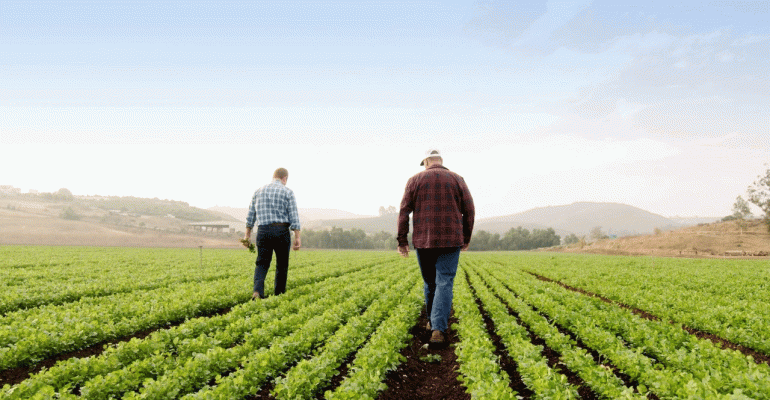When March 2020 brought an unprecedented shut-down of indoor dining, the last thing on everyone’s mind was sustainability.
For the first few months, as the restaurant industry scrambled to adapt, the focus was entirely on sanitation to keep the dreaded coronavirus at bay. But as we learned more about how the virus was transmitted and vaccines offered hope of some protection, restaurant operators were forced to look again at operational strategies to ease their impact on the planet.
Not only had COVID driven the restaurant industry to build a vast off-premises business — one that created a mountain of disposable foodservice waste, gloves and facemasks — but over the past two years the country battled wildfires, drought and powerful storms, raising alarm bells about global warming and a changing climate.
In late 2021, the United Nations gathered world leaders in Scotland for the 26th Conference of the Parties to the UN Framework Convention on Climate Change, or COPA26. The clear message? We must act, and we must act fast.
Now restaurant companies large and small are taking a hard look at sustainability as a central pillar, though some more than others. It’s an issue to which consumers — and increasingly shareholders and lawmakers — are paying close attention.
Activist investor Carl Icahn has reportedly nominated more sustainably minded directors to McDonald’s board, for example, with the goal of addressing issues like the chain’s sourcing of meat. The nominees argued that making more sustainable choices could better protect the chain from certain “reputational and governance risks.”
A few large restaurant chains have tied sustainability goals to executive compensation, including Chipotle Mexican Grill, Starbucks, Noodles & Company and McDonald’s.

Starbucks has renewed its journey toward reducing reliance on disposable cups.
It’s now common for large operators to disclose their sustainability goal-setting openly in sometimes massive reports on their websites, detailing everything from complex, science-based plans for reducing emissions to the selection of suppliers that practice better-for-the-planet farming methods to how they’re slashing waste production in half.
Here are three common sustainability themes that have taken center stage since the beginning of COVID.
The to-go packaging tsunami
Perhaps more than any other sustainability challenge, the pandemic has exacerbated the world’s waste problem.
The shift to delivery and takeout has resulted in a massive increase in disposable packaging. With less than 10% of the nation’s plastic waste being recycled, most of that packaging is ending up in landfills, incinerators or finding its way into waterways or oceans.
Restaurant operators say they’re working on it, but with supply chain issues ongoing, it will likely take time. Yum Brands, for example, has pledged to eliminate the use of expanded polystyrene at restaurants globally by the end of this year, and all paper-based packaging will come from responsibly managed forests and recycled sources.
Starbucks has renewed its journey toward reducing reliance on disposable cups, expanding its reusable-cup programs and testing systems to make the process easier for guests.
Likewise, Tim Hortons is also relaunching a reusable-cup program for both hot and cold beverages and the use of washable in-restaurant dishware to reduce the use of disposables.
Chains like New York City-based Just Salad, which was one of the first to pioneer a reusable-bowl program more than a decade ago, has proven that it can be done, removing almost all single-use plastic waste from its supply chain, according to CEO Nick Kenner.
Further driving the move away from disposables is concern about potentially toxic “forever chemicals” known as PFAS — per- and polyfluoroalkyl substances — commonly used in foodservice packaging. PFAS, which can leach into food on contact, have been linked to health risks such as immune system suppression, lower birth weight and cancer. Perhaps more alarming is the chemicals can contaminate soil and water when that packaging waste is sent to landfills.
A growing number of states have adopted legislation to reduce the use of PFAS in food packaging and cookware. In California, for example, legislation goes into effect next year that will restrict use of added PFAS in foodservice packaging. The U.S. Environmental Protection Agency is also investigating PFAS contamination from food packaging.

Cava is one of several restaurant chains that have begun the process of phasing out the use of added PFAS in packaging.
Several restaurant chains, including McDonald’s, Restaurant Brands International (Burger King, Tim Hortons, Popeyes), Wendy’s, Chipotle Mexican Grill, Panera Bread, Chick-fil-A, Sweetgreen and CAVA, have begun the process of phasing out the use of added PFAS in packaging.
Cutting back on carbon emissions
This issue long preceded the pandemic, but the urgency of climate change has restaurant operators stepping up efforts.
For many, carbon offsets — or the investment in “carbon-negative” projects that fight climate change, like tree planting or renewable energy — is part of carbon-reduction efforts. But operational changes to reduce greenhouse-gas emissions is also necessary to reach sustainability goals.
Chipotle, for example, has pledged to cut emissions in half by 2030 throughout its 3,000 restaurants, as well as its supporting supply chain. The company is looking at greener design of restaurants, and reducing emissions associated with transportation. The fast-casual chain is among those who offer guests guidance on how menu items impact the planet through Real Foodprint, a sustainability impact tracker.
Yum Brands has switched to renewable energy for its corporate U.S. offices and pledged to shift 1,000 restaurants to renewable sources by the end of 2021.
Burger King parent Restaurant Brands International has set the goal of reaching net-zero emissions by 2050 or sooner. Among its goals is the pledge to transition its entire corporate car fleet, and more than 70% of its truck fleet, to electric vehicles by 2030.
Sourcing more strategically
Concern about emissions resulting from the production of beef, chicken and pork has helped fuel the rise of plant-based food products, now ubiquitous across the industry.
Beyond carbon production, however, restaurant companies continue to face cries for better ingredients, whether chicken raised without antibiotics or produce from farms that support regenerative agriculture or offer a livable wage to workers.
Restaurants have made progress in adopting sources for cage-free eggs and moving away from gestation crates for pork. The use of antibiotics in beef remains a concern.
A coalition of public health, animal welfare and food-safety groups this year continued to pressure McDonald’s to fulfill its 2018 promise to set targets for reducing the use of medically important antibiotics throughout its global beef supply chain.
Several other large restaurant chains have set goals for suppliers to reduce the use of antibiotics in animals, but because of McDonald’s size, setting such targets could have a huge impact, argues groups like U.S. PIRG, which lobbies against the overuse of antibiotics.
The use of antibiotics in animals raised for food has contributed to the rise in antibiotic resistance. According to a recent report in the medical journal The Lancet, more than 1.2 million people worldwide died from infections that antibiotics couldn’t treat in 2019.
Read more:
MENU: Two years after the pandemic started, menus are leaner, smarter — and often better
SERVICE: Consumers will want to choose their own experience in a post-pandemic world
TECHNOLOGY: Virtual brands have matured from curious idea to pandemic life saver
COMMUNITY: How foodservice philanthropy rose to the occasion in unprecedented crisis
Contact Lisa Jennings at [email protected]
Follow her on Twitter: @livetodineout

